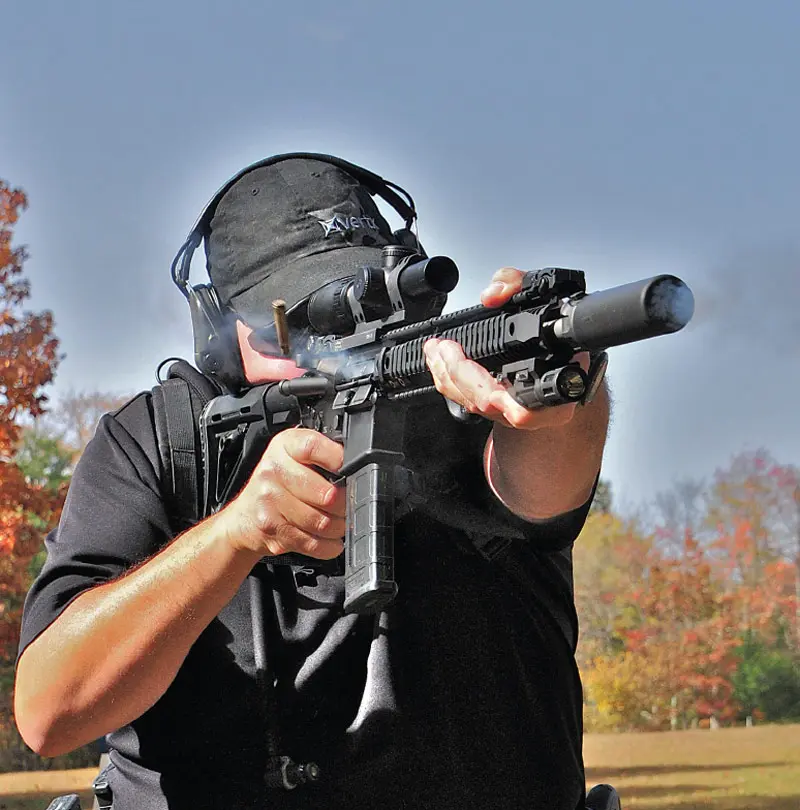
IN light of the current excessive wait times on NFA paperwork, I decided to work up a legally attainable rifle for the average citizen that would offer them a highly capable allaround rifle with SBR balance but without the hassles that go with one. The result of this project is the Special Ops Tactical Hanson 14.5 Rifle.
For those not aware of what Special Ops Tactical (SOT) is, allow me to enlighten you. The owner of SOT is Garrett Potter, born and raised in central Florida. Garrett is a third-generation commercial pilot and certified flight instructor. He has thousands of hours flying everything from Piper Cubs to Turboprops. Garrett learned the gun industry working for Spike’s Tactical, where he helped manage their large numbers of law enforcement and dealer sales.
Some of you may be wondering, “What would a pilot know about making rifles?” My answer is this, what would Eli Whitney, inventor of the cotton gin, know about making muskets? Nothing! But he learned, and quickly, I might add.
Eli Whitney spent many years fighting patent infringement cases on his cotton gin. He suffered greatly and was on the verge of bankruptcy when in 1798 he obtained a U.S. Government contract to manufacture more than 10,000 muskets so our nation could be ready for impending war. Eli Whitney succeeded in building muskets where he failed with the cotton gin.
Anyone can learn how to make a great rifle if they’re willing to learn from the successes and failures of their predecessors. Sometimes the market dictates a new road for a man to follow. Garrett is blazing a new path in his life, and thus far the results look pretty good.
Table of Contents
SOT HANSON 14.5
When Garrett and I started talking about building a rifle together, I gave him a list of specs I wanted. I specifically said I didn’t want anything he didn’t have in stock. I was after the speed and balance of a race gun without getting out of control with custom components.
Garrett has aligned himself with people who know how to make weapons. Garrett turned our project over to a couple of men whose work I know well. The first was Adam Wainio of Ballistic Advantage, LLC (BA). The heart of any rifle lies in the barrel. When I heard that BA was in on this build, I was very pleased.
The second person is a gentleman who recently came onboard with BA and SOT but is no stranger to building and diagnosing rifles. Clint Hanson has been building my rifles for years and has absolutely earned my trust. For those of you who own Spike’s Tactical rifles, take a look at your final QC paperwork— you’ll most likely see Clint’s name there. Clint now works for both SOT and BA and brings with him a great wealth of knowledge. Clint approaches his craft with a minimalist’s view of design.
I named this rifle the SOT Hanson 14.5 because it’s Clint’s Shoulder-Less barrel design that is at the heart of this rifle. This is not the barrel spec I asked for, but I honestly couldn’t be happier with the end results. I defer to wisdom when it presents itself.
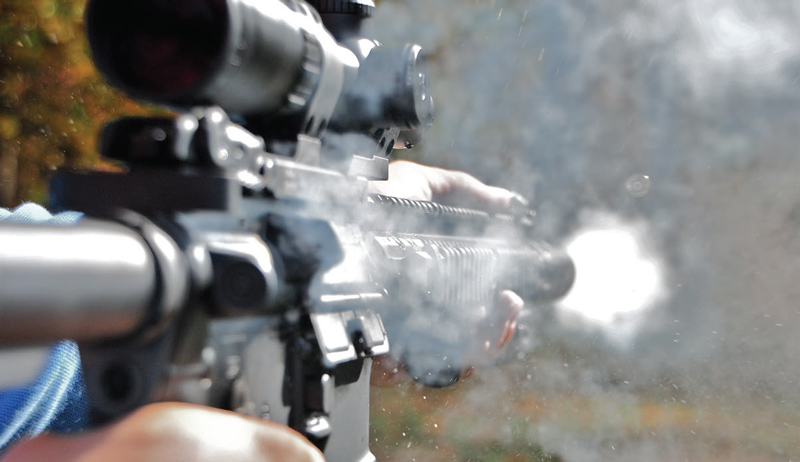
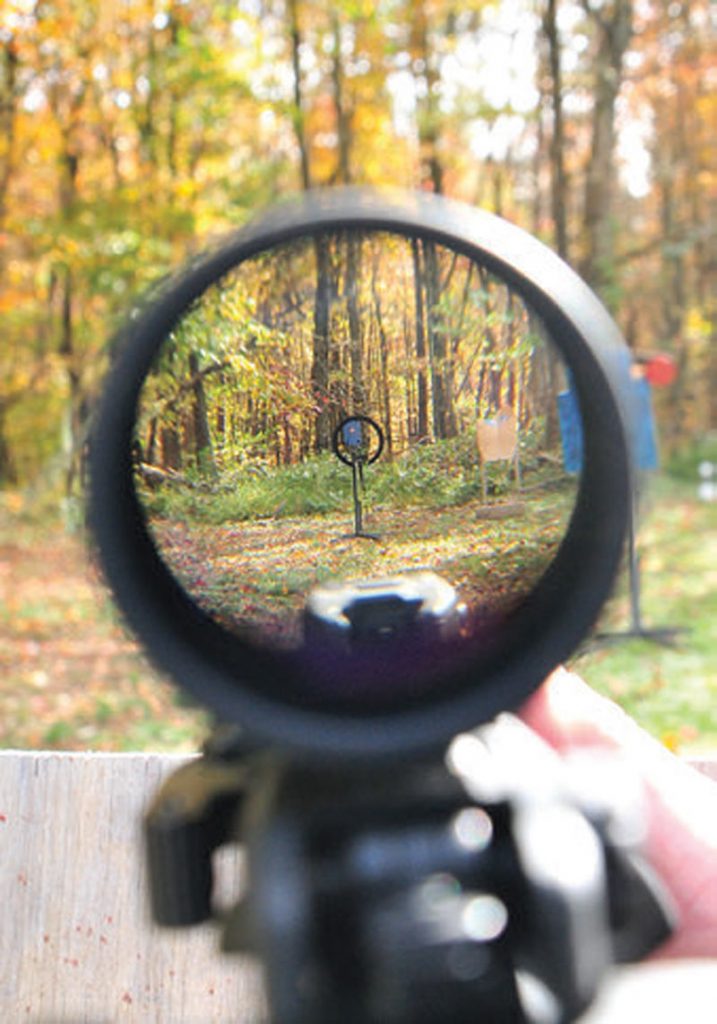
MEN WITH GREASY HANDS
In collaboration with the “Greasy Hands Club,” we came up with a rifle that is both fast and very reliable. The finished product was more than I expected, and I’m particularly proud of it because it’s the first weapon I’ve been involved with that S.W.A.T. readers can obtain without NFA paperwork.
Here’s a weapon that won’t cost you an arm and a leg—it just shoots like it does. Though the rifle can be customized at the time of ordering, the standard version has everything you’ll need to get runnin-n-gunnin for $1,360.
It employs Clint’s Shoulder-Less barrel in 410 SS with a Melonite gas tube, Melonite Low Pro Gas Block, milspec bolt carrier group and trigger group, sixposition stock, A2 grip, and Phantom flash hider drilled, pinned and welded. The enhanced version is shown in this article. The only differences are cosmetic changes of Magpul kit and SureFire flash hider. There really isn’t much this rifle needs to be “better.”
I attend at least five training schools every year and go through a lot of ammo. While Black Hills is kind enough to support me with T&E ammo, I do supplemental training on my home range outside of what I do for S.W.A.T. For that I shoot whatever I can get my hands on. Like most Americans, I struggle to put food on the table for my family, so I will shoot any reputable .223/5.56. Unless you can afford to build a gun around a certain bullet, you need a rifle that can shoot anything.
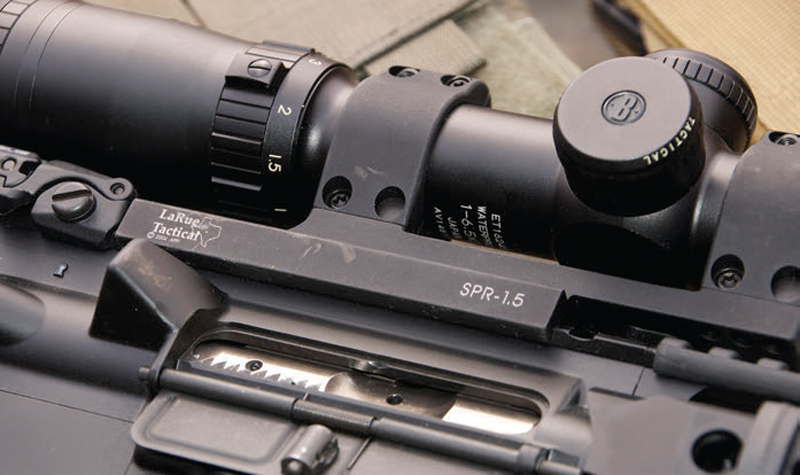
Let’s also not forget that from a mechanical standpoint, this is an SBR.
MECHANICAL INTERFACE
Clint has taught me that you can assess a rifle in as few as three rounds. Do this sort of thing enough and you learn to feel the weapon through the mechanical interface of the trigger, grip and buttstock. Generally speaking, if a rifle is going to fail, it will do so on the first trigger pull.
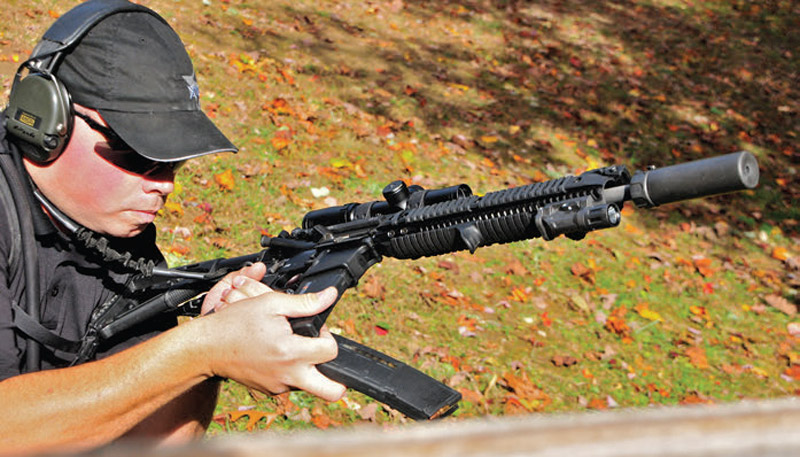
Reaching the perfect gas balance comes with knowing the physics of arresting an explosion and tapping its forces so as to cycle the weapon. Clint learned this skill from rote tasks performed precisely, day in and day out, for about four and a half years. In QC checking rack after rack of rifles, he’s learned to feel the bolt unlocking and extracting the empty casing. He then feels the next round stripping from the mag and locking into battery. This is all done by feel and visuals.
I diagnose a rifle on the range in a similar fashion. Watching which direction your brass ejects can tell you volumes about your rifle’s gas system.
I learn by getting rifles filthy with a suppressor, then pushing forward to failure to see what the weapon will take. Rounds fired in the shop are only the starting point: a weapon will show its true character in the elements. This is why it’s crucial to know how to build them in the controlled environment of the shop, where a bullet trap actually creates a false back pressure that makes the weapon run better than it will in open air. You have to know how to factor that into the finished rifle.
There’s much more to building a rifle than just assembling parts.
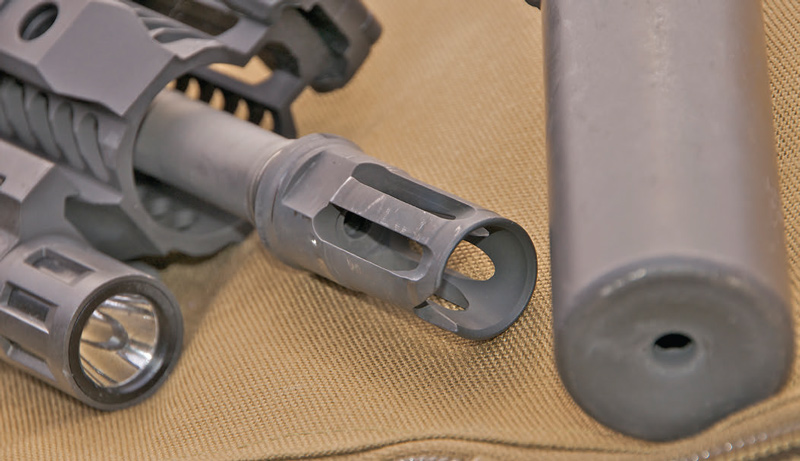
The SOT Hanson 14.5 is a variation on a Three-Gun Match Rifle. For obvious reasons, I wanted that kind of balance, but I also wanted a scalable weapon for lights and optics. The question was, which barrel length to go with? This is where my experience with NFA weaponry came in handy.
As a credentialed FFL/SOT 72 manufacturer, I’m authorized to have anything I want in machine guns, suppressors, and short-barreled weapons. But once the “fun factor” wears off and the immense responsibility sets in, you are able to look at weaponry from a very objective point of view. When nothing is legally out of reach, you start paying attention before spending money.
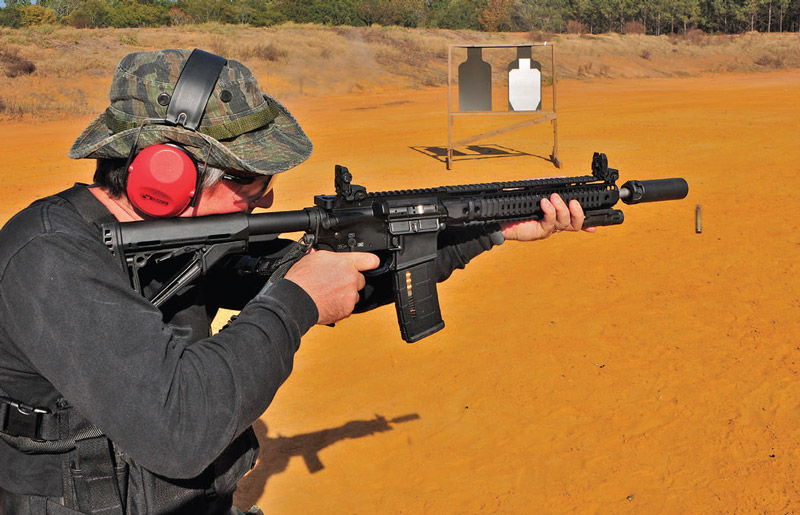
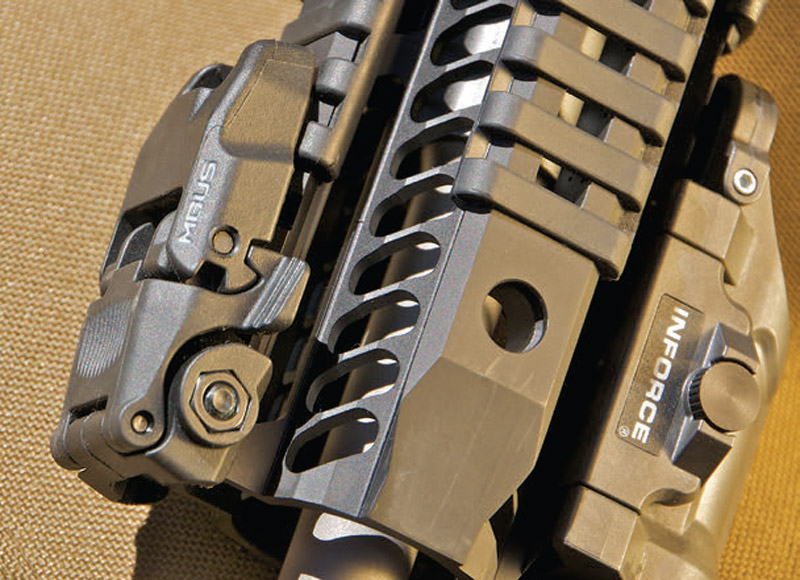
THE CASE AGAINST SBRs
With this bit of objectivity, I’ll tell you something that will make your day. Fullauto rifles and SBRs suck. S-U-C-K!
Let me say it more clearly: machine guns are terrible to work with. They run hot and blow fouling all over their components. This goes double for SBR machine guns. They chew through your ammo at an alarming rate and are difficult to keep on target past more than a burst.
The only saving grace about having a machine gun license is that you can work with any barrel variation without restrictions. There’s a whole lot of learning in all that flying brass. The shorter you go, the less reliable the weapon becomes, and the more heat and fouling you have to endure.
For the private citizen, the holy grail of rifles is the SBR, and frankly that is where you need to stop looking. I learned a brutal SBR lesson when I got my first one about five years ago. Please learn from my experience. If I can get you to understand what we SOT holders already know, it will save you a lot of frustration.
Here is what I do like about SBRs. If they’re built correctly and fed good ammo, they excel at every task you throw at them. They’re very balanced in ergonomics and fit in any environment. But if an SBR is not properly built, it will fail and frustrate you terribly.
If you’re looking for SBR balance and rifle reliability, a 14.5-inch barrel with flash hider drilled, pinned and welded is the solution. Add to that a mid-length gas system and you’ll have a smoothshooting rifle that is adept at cycling most anything you give it.
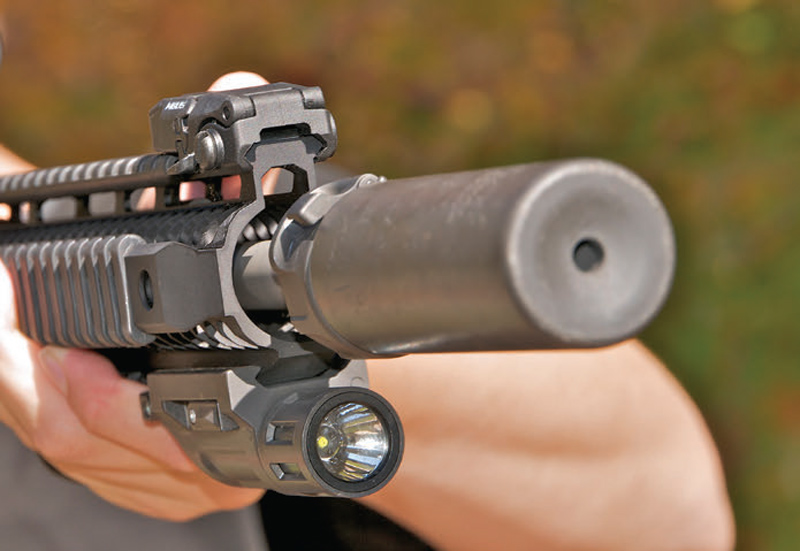
TACTICAL MEETS PRAGMATIC
At the heart of a great rifle is an equally great barrel. In an effort to create a harmonically stable barrel, Clint created a profile that was bereft of any right angles and as harmonically stable as possible. In doing so, he ended up with a barrel that behaves like a harmonic funnel.
The barrel starts out very wide at the interface between the upper and barrel nut. The farther it goes toward the muzzle, the thinner it gets. Typically manufacturers halt the lathe at the gas block area and cut a shoulder into the barrel profile so the gas block has something to rest against. However, the truth is that the gas block needs no such support. It gets its support from the setscrews that bite into the barrel steel and hold it steady.
The Hanson profile briefly transitions to a flat area for the gas block to properly seal against, then just as quickly the barrel continues its conical profile until it ends up with an 11-degree target crown. The crown is then protected by the SureFire muzzle device that is welded to the barrel, so the 14.5 inches become 16 inches, hence no need for NFA paperwork.
RANGE TIME
As I like to do, I put this rifle into the hands of as many novice shooters as possible. Not only is it a smooth shooter, it’s very easy to ring steel even with iron sights.
For my range time, I started off using nothing more than the MBUS sights. I marveled at how fast the weapon sighted in. I believe this is because the sight radius is so long. The front sight is crisp through the peep sight, and I am able to hold it steady on target.
The rifle balances beautifully even with the stock collapsed. The 12.6-inch SOT rail and Hanson barrel make a very light combination. There is no overtravel at all when transitioning from target to target. The 410 stainless barrel imparts a velocity that doesn’t need to be chronographed for the shooter to know it’s smoking fast. This gun violently shakes my steel plate racks on impact, so I know it’s quickly zipping those rounds downrange.
In an effort to push the rifle to failure, I put a SureFire Mini Suppressor onto the muzzle device and cracked off about 90 rounds of PPU M193 without failure. I then transitioned to Black Hills 55-grain .223 Match for another hundred rounds with the can in place. The gun kept running even though it had shot itself dry.
Every other mag, I would pour water into the suppressor to blast off as much carbon as possible and generally make a mess of the rifle’s gas system. The rifle just kept running.
I then zeroed a Bushnell Elite Tactical SMRS 1-6.5X24mm Illuminated BTR-2 SFP on the carbine and moved farther back on the range. LaRue Tactical generously loaned me a set of their SPR 1.5 QD rings. LaRue is perfection. Return to zero is implied with their mandate, and accuracy is inherent in all they do.
The combination of the Bushnell optic and LaRue mount turned this rifle into a cross between a race gun and a tactical/precision tool. From a standing position at the 100-yard line, you can very quickly throw the true 1X ring over to 6.5X zoom and put multiple shots into an IPSC torso without breaking a sweat.
CLOSING THOUGHTS
America currently faces a crossroads. As a nation, we are polarized in a manner that truly concerns me, and we have a President who keeps fueling that fire.
My advice to all Americans is to buy a good rifle right now, because we will remain free only as long as we stay a responsible and armed nation. Choose a rifle that is short so you can move quickly with it, but not so short that it requires registration with an NFA branch.
The SOT Hanson 14.5 is a rifle designed and built by men with carbon under their nails and grease permanently embedded into the creases of their hands. This is a rifle with true grit—what this country was founded on.
If you’re looking for a reliable rifle built by folks with many years of experience, do yourself a favor and look to Special Ops Tactical. They clearly know what they’re doing.
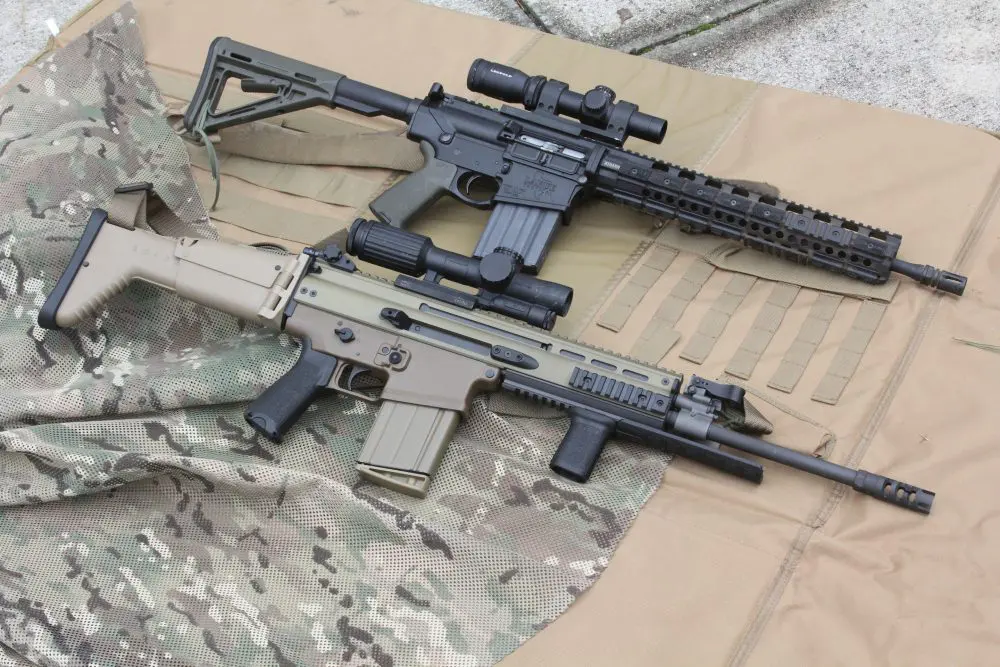

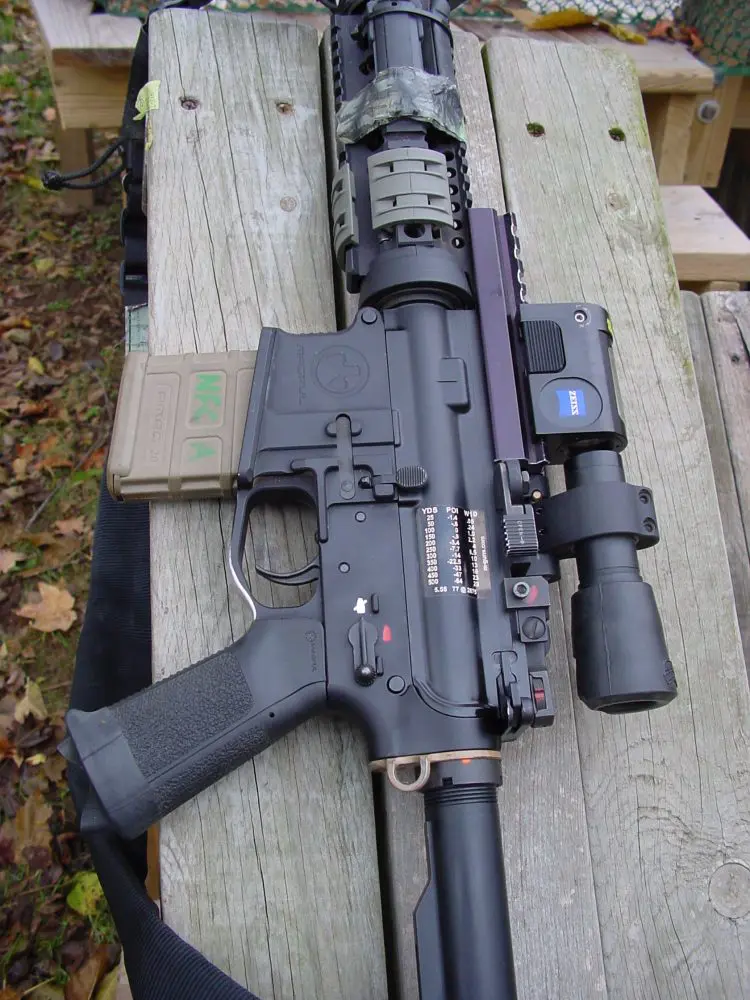
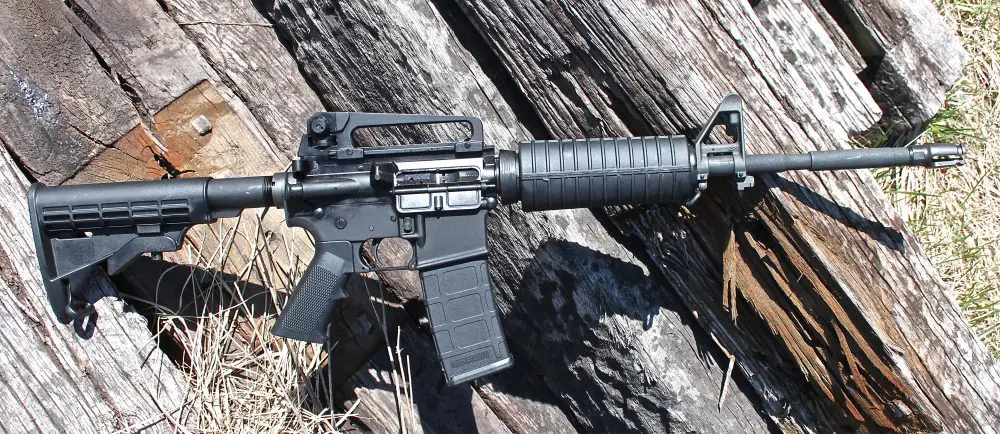
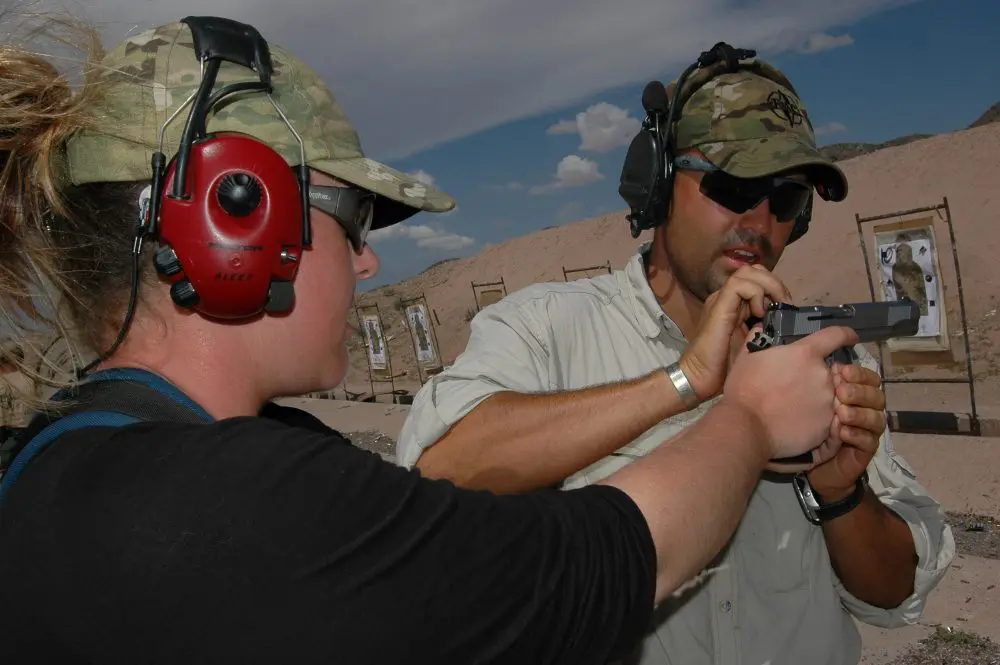
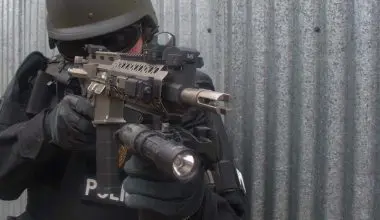
1 comment